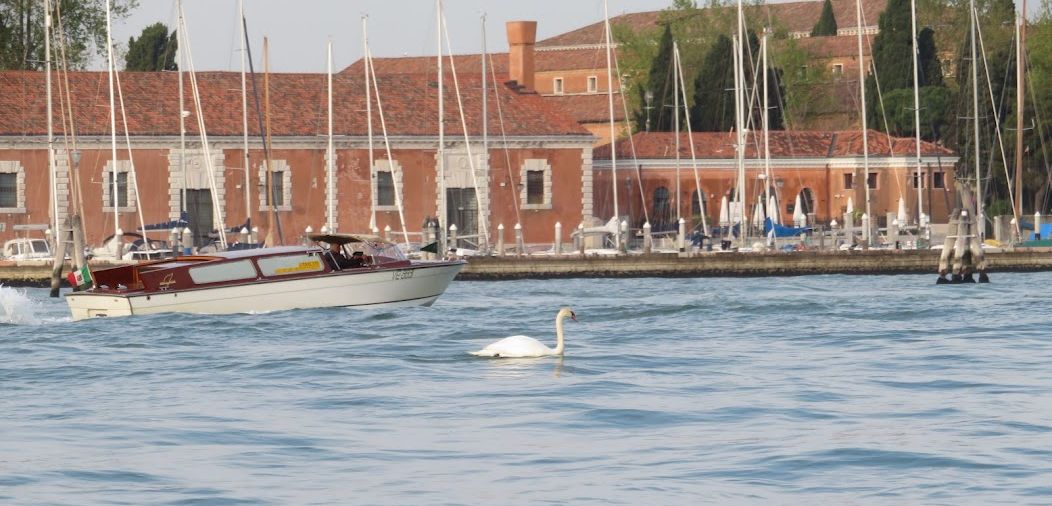
May 1 was a national holiday, here and in many other countries, and it’s generally known as International Workers’ Day. So in honor of workers everywhere, we also did not work that day. We went out for an early morning row, and were amazed to be met in the Bacino of San Marco by a very fine, and very unexpected, feathered friend.
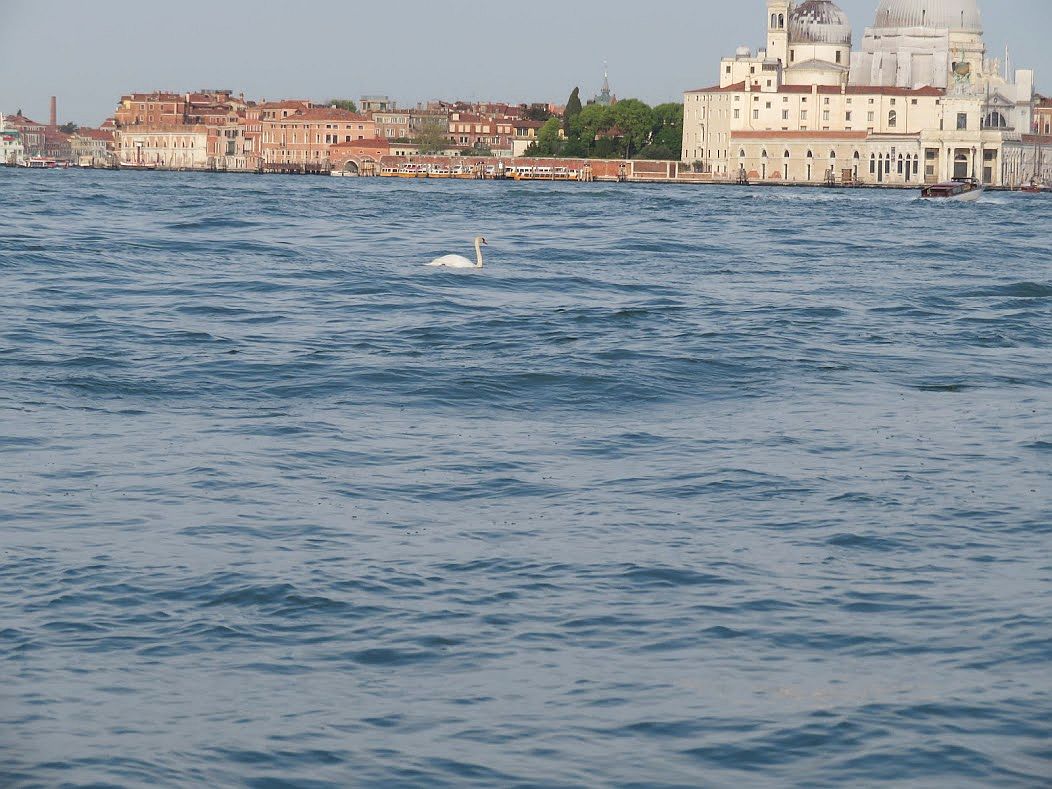
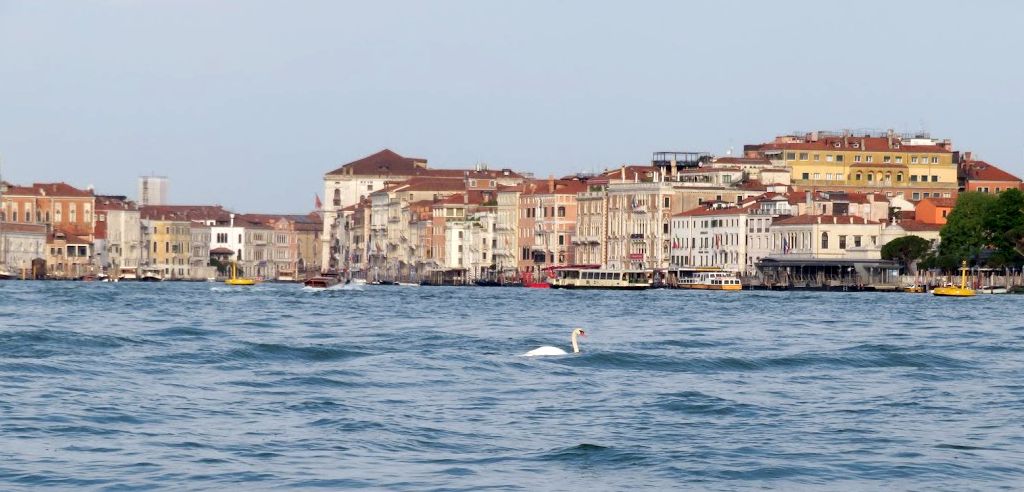
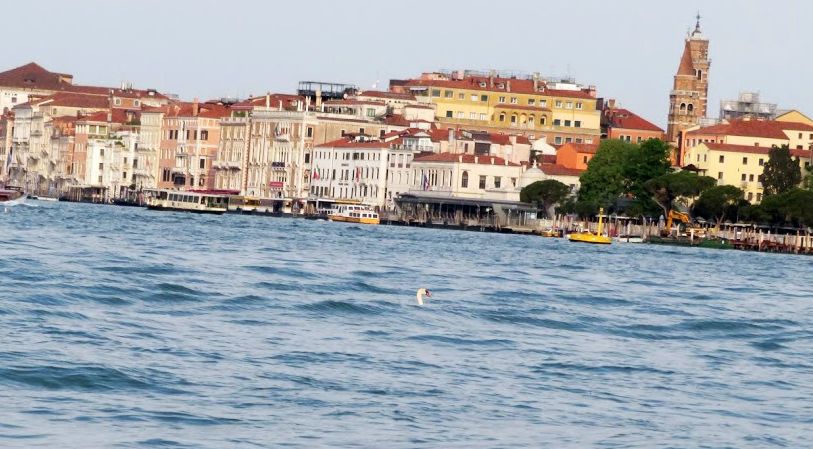
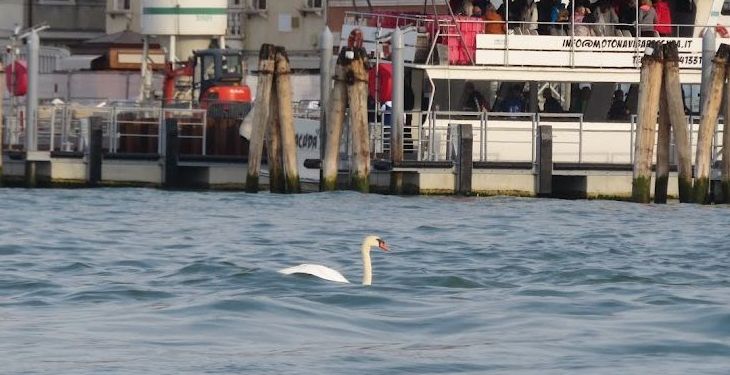
We have often seen a pair of swans in the northern lagoon, beyond Torcello, and also on the Brenta river near Malcontenta; one time we counted nearly 50 floating in the distance near Sant’ Erasmo. Lino told me that when he was a lad, some birds that we now commonly see in the city, such as cormorants, egrets, and seagulls, never came to town. You’d see them only in the distance, he says, if you saw them at all. Now they’re everywhere.
But the swans weren’t to be seen anywhere. About 35 years ago, Giampaolo Rallo, now president of the Mestre Pro Loco, then a naturalist at the Natural History Museum, noticed that there wasn’t a swan to be found in the lagoon, “not even if you paid it,” as one account put it. So he got what he calls “this crazy idea” to bring back the swans. On April 13, 1984, the World Wildlife Fund (WWF), together with the Gazzettino, launched a drive to find individuals willing to sponsor (fancy word for “pay for”) pairs of swans — not a small contribution, considering that a pair cost the equivalent of $315 today.
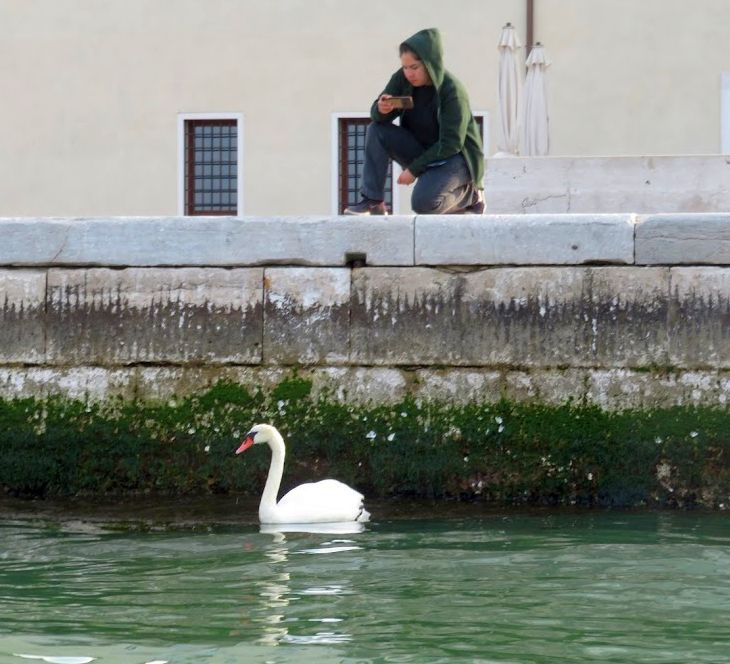
Over a period of two years, up to one hundred couples were acquired in the Netherlands and placed in the “fish valleys” of the southern lagoon. “It was a great cultural work,” Rallo explained to a journalist from La Nuova Venezia in 2019, “because we had to teach the respect of all the great waterbirds — I’m thinking also of the flamingoes. But there was real enthusiasm in the city for this initiative and there were important signs, such as the participation of Federcaccia Venezia” (the hunters’ association) “which bought a pair and made their volunteers available to watch over the swans to prevent anyone from disturbing or wounding them.” Who would hurt a swan? Well, hungry people a few generations back had no problem with trying to get these spectacular creatures on the table.
Today there are a thousand swans in the lagoon, and are sometimes seen even in Mestre’s modest waterways. A breeding pair named Silvia and Peter live near the lagoon at Caorle, and are awaiting the hatching of their eleventh brood of cygnets.
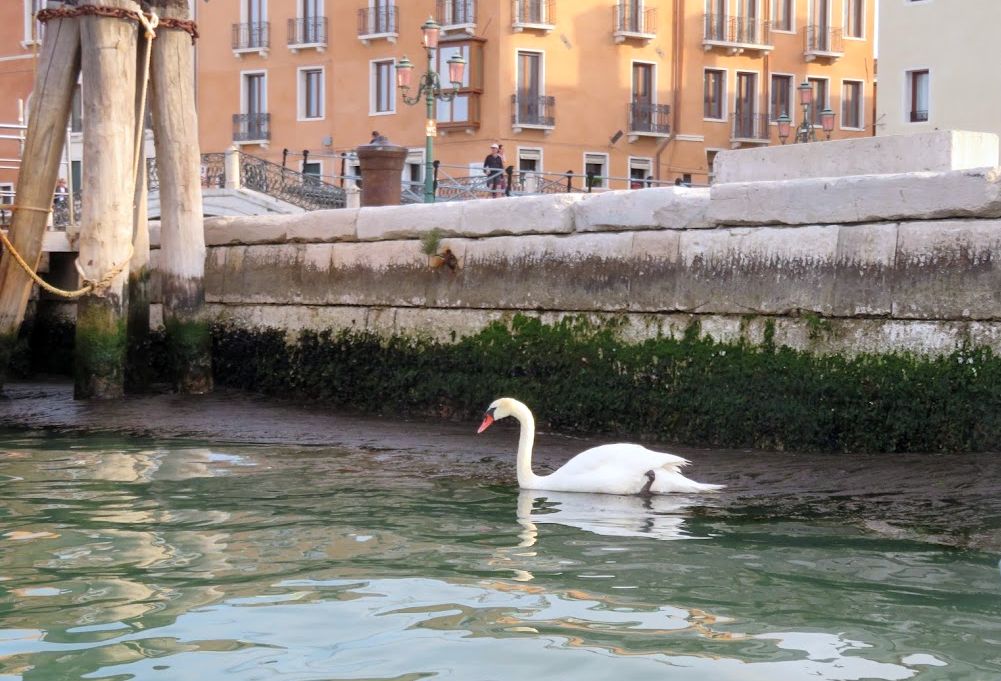
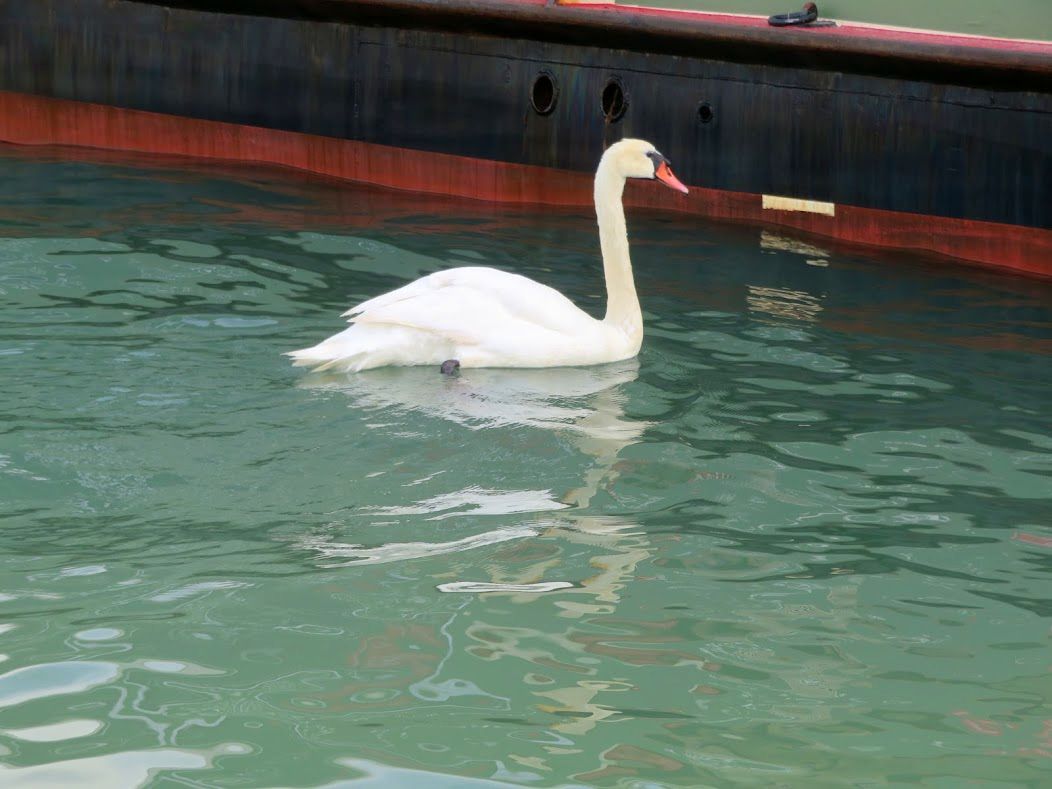

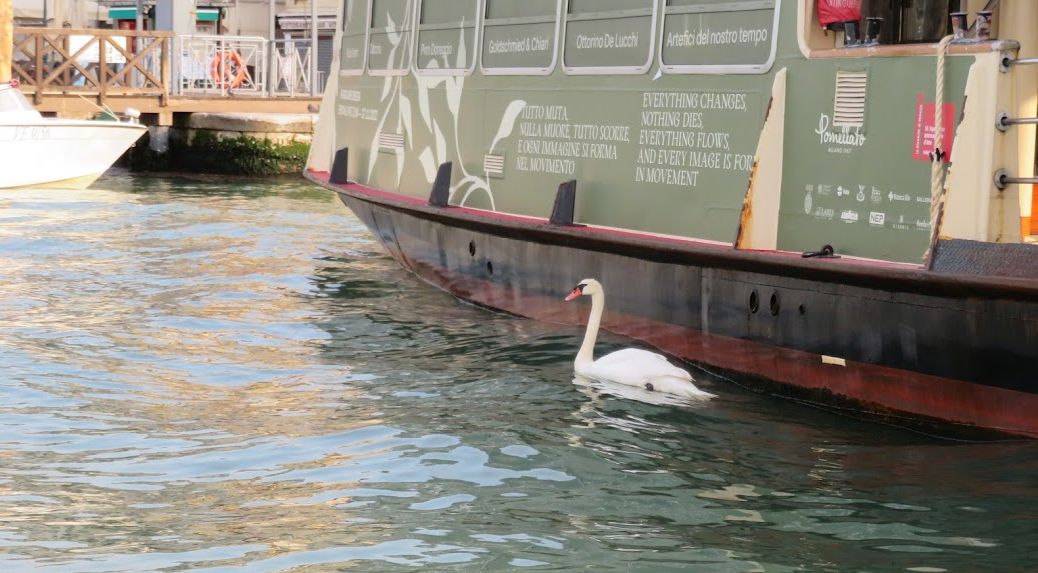
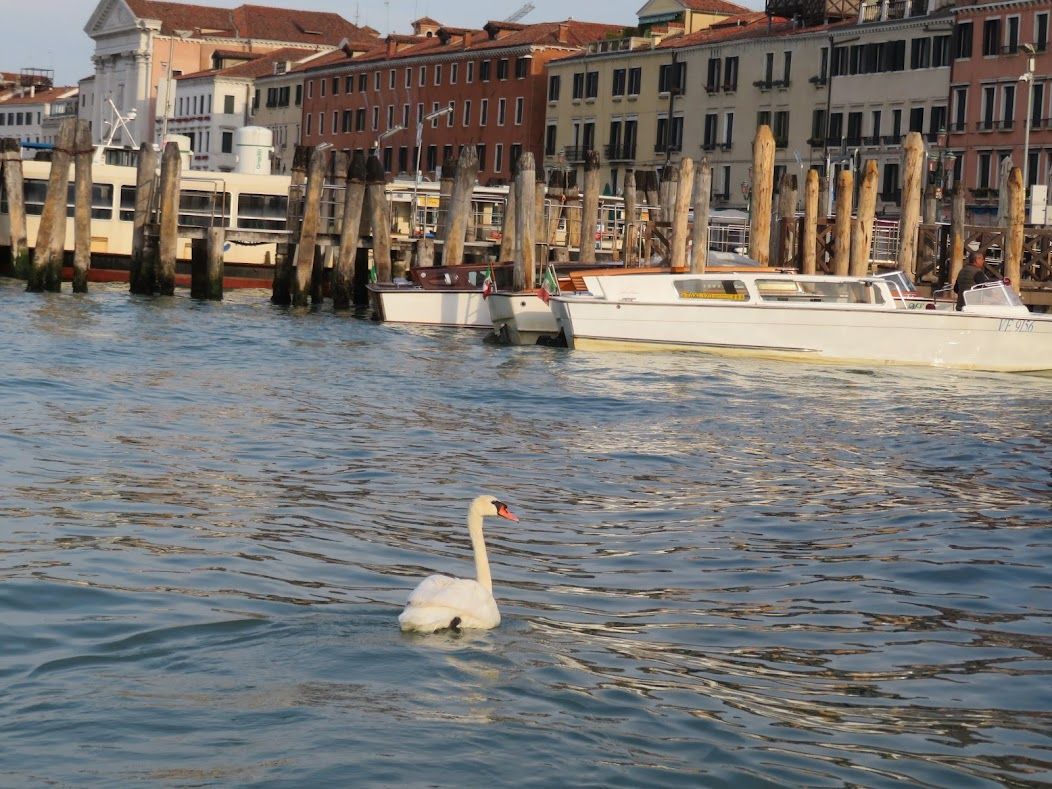
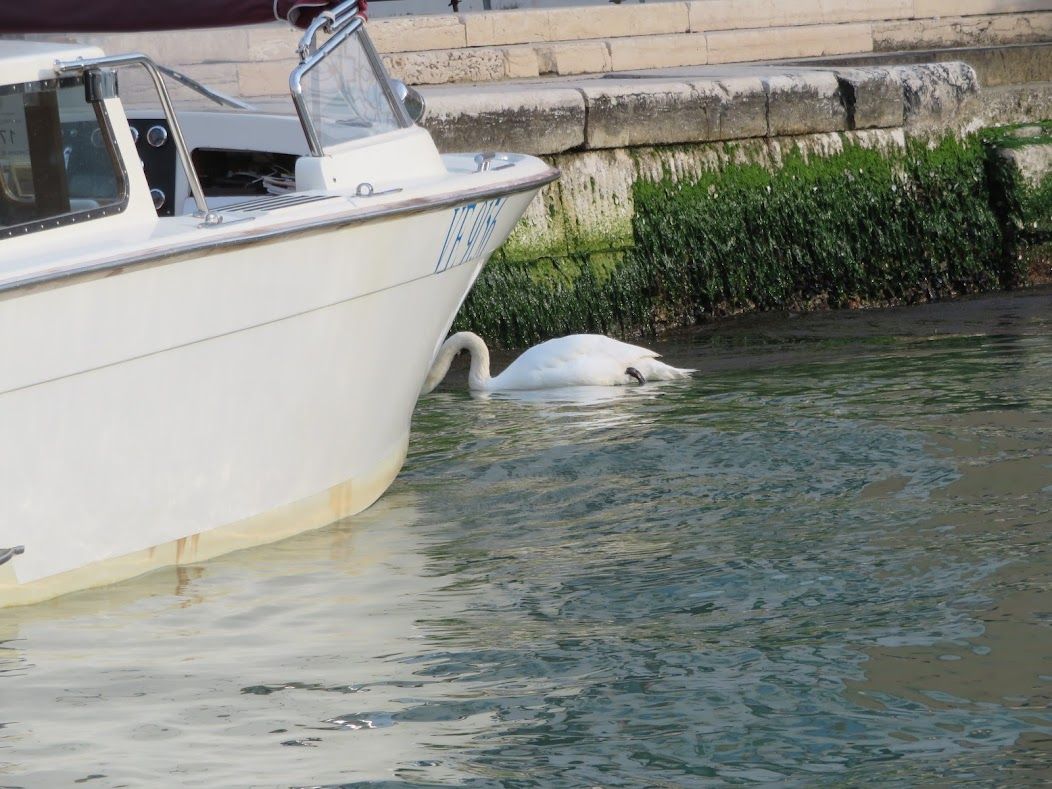
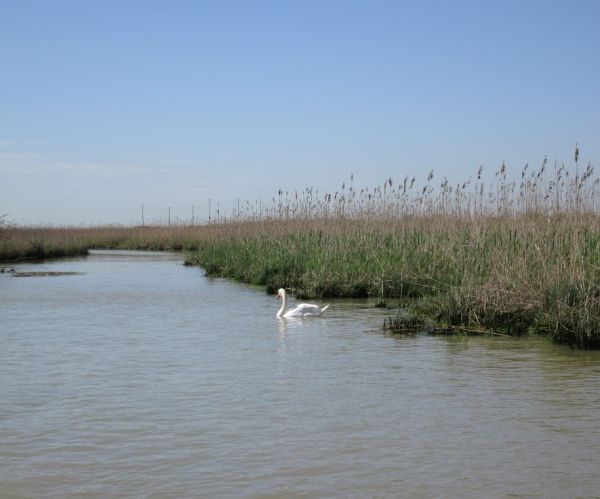
My most powerful memory of swans was a moment that was not, and anyway could not have been, photographed. It all happened so quickly.
Years ago, we were out rowing near the island of Santo Spirito on a deep grey morning in winter. Suddenly a trio of large birds flew toward us — three swans — flying so low it seemed we could touch them.
I had never seen swans flying, much less so near. As they passed overhead, their long graceful necks undulated slightly, and a barely discernible murmuring sound came from their throats.
Swans may be beautiful when they’re doing nothing, but when they fly they are magic.
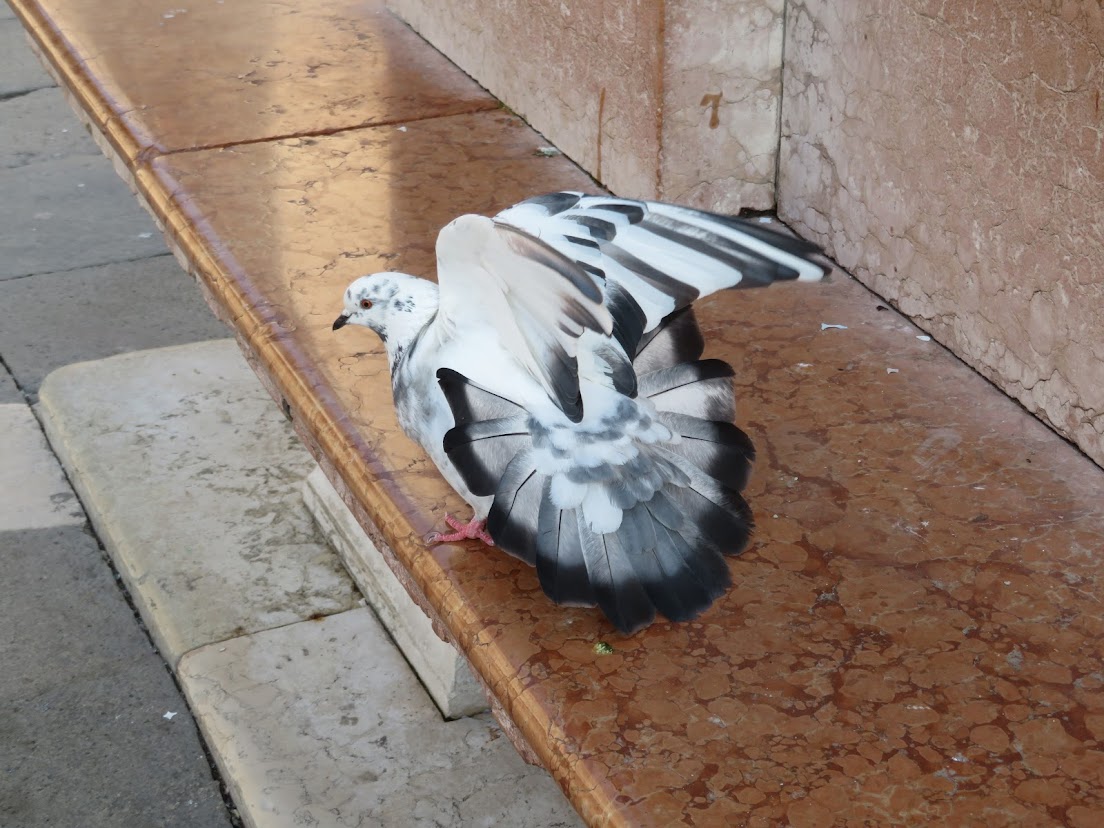

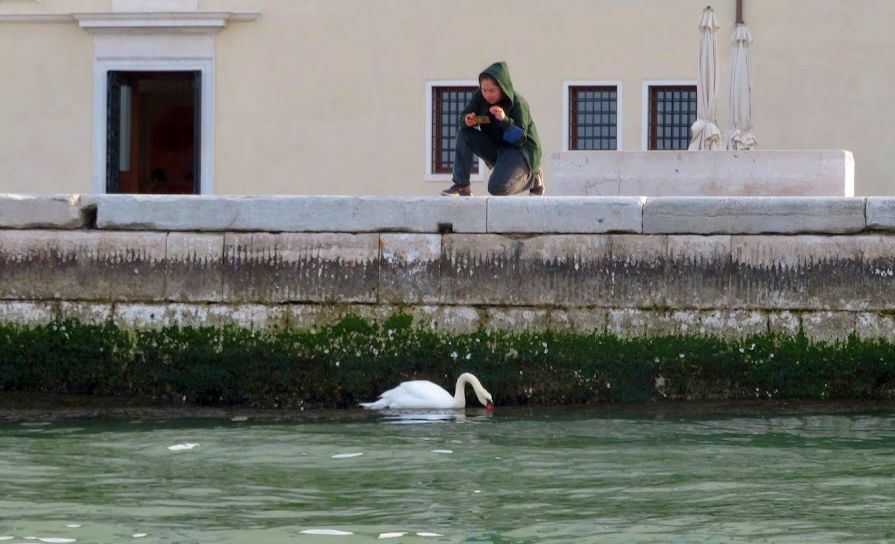
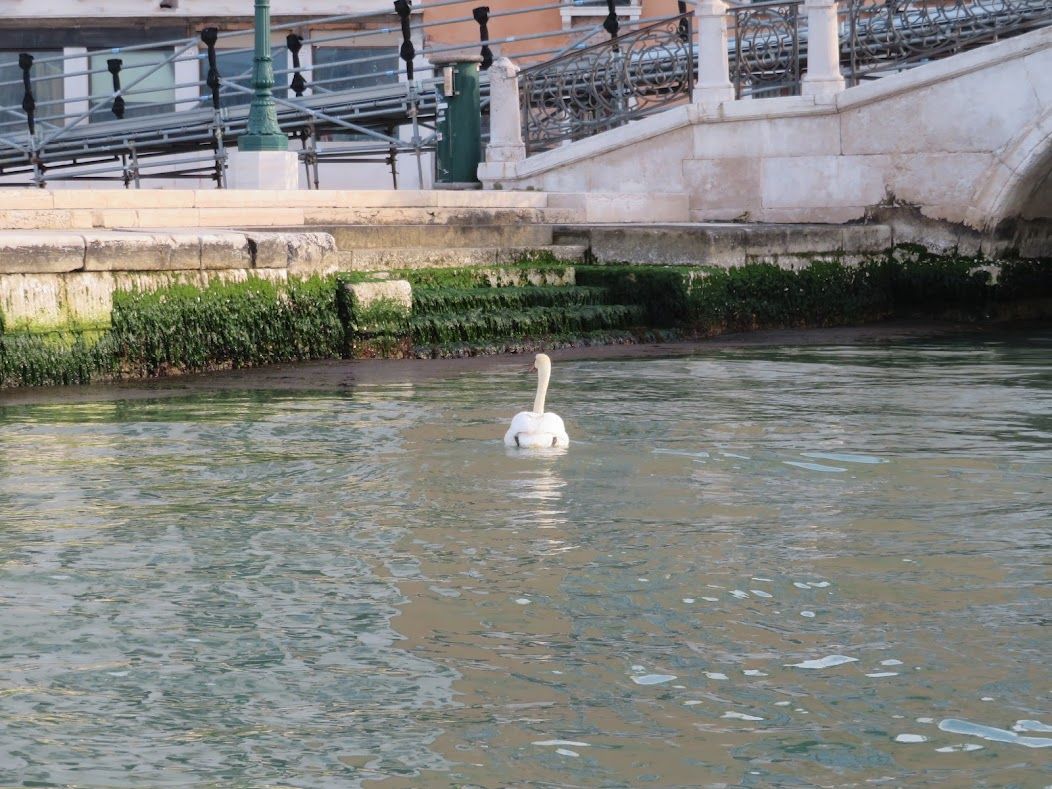
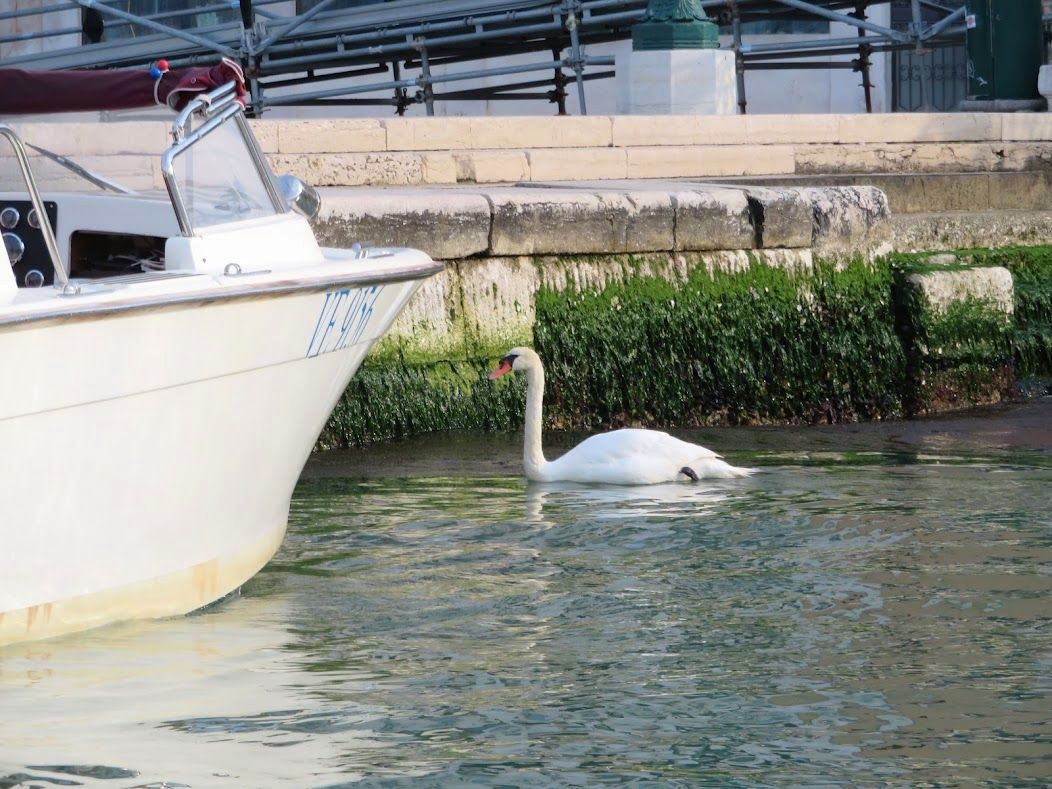
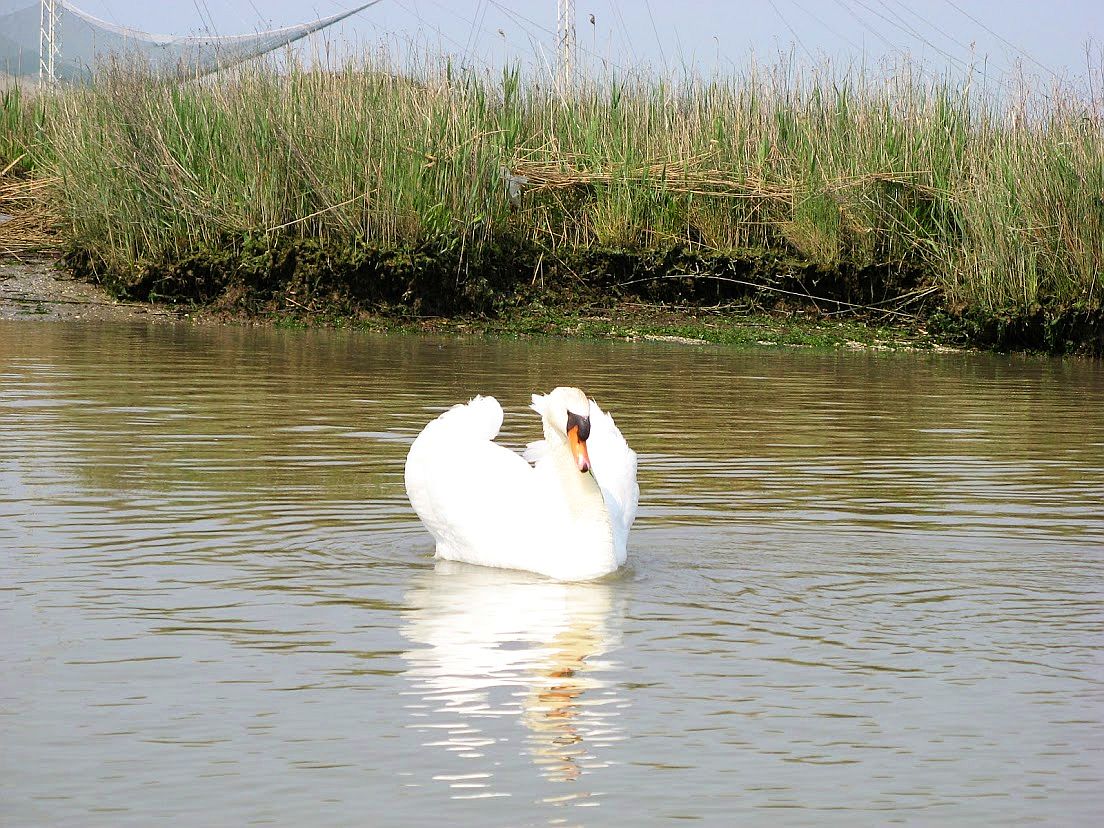
10 Comments
Erla: Wonderful photos, and this from a now ancient former critic. I have heard (or read) that one movement of a Sibelius symphony (can’t remember which or which) was inspired by the sight of swans flying overhead majestically.
And I’m impressed that you and Lino row on the choppy Bacino.
It’s either that or stay home, but it’s no pleasure. We try to get across it as fast as we can but it’s getting to be more of a slalom race than anything else.
What a lovely May Day story and pictures; a welcome bit of calm and elegance in an ever coarsening world. And thank you to Owen Edwards; I didn’t know the story behind the end of Sibelius 5 finale, but now I will have your stunning image of flying swans (perhaps with splashdown) whenever I hear the heart-stopping conclusion of that symphony.
What a beauty! Was there a swan song?
How lovely, thank you Erla!
It was when the fat lady sang.
Very beautiful post! I love your prose so clean, pure, essential. And you must be very quick with your camera!
Very handsome compliments and I appreciate them and your taking the trouble to send them. They’re like little puffs of oxygen.
Thank you for another great Venice POV,
I do love the birdlife in the lagoon, the little ducks, egrets, and cormorants – or as my son calls them- ‘the diving ducks’, but I don’t ever recall seeing a swan within the city itself.
What a gift <3
Nothing better than a boat, ferry and taxi free day, smooth lagoon waters and an early morning or late evening row around the canals, pure magic.
I'm always curious about the rapid rise and evolution of the seagull in Venice.
My observations were from 1998 well into 2000's seagulls were what you saw when you went out fishing, and only occasionally in Venice near the markets.
But from late 2000's onwards I noticed a chain of events, and the influx of seagulls…
The systematic closures of wonderful little 'mum&dad' stores.
Venetian families moving to the mainland.
Family homes becoming holiday rentals.
Garish stores overtaking the streets.
More cruise ships, bigger crowds of tourists.
An army of knicknack souvenir carts.
Coin disappeared.
More rubbish than the city could cope with.
And more and more seabirds coming in to the city.
The seagulls became more aggressive, and then seemed to morph into 2 groups; regular seagulls and massive albatross like birds the size of a small fixed wing aircraft, both groups behaving like thugs.
I'm wondering if the enforced isolation of the pandemic managed to reset the balance for the birdlife of the lagoon.
Maybe the swan is a sign….
**I did have a giggle imagining flamingoes in the lagoon. 🙂
Leaving today with my 3 Grandchildren for Rome, Florence and my favorite, your city Venice. I only had a few hours in 2017 with my one Granddaughter I brought to Venice, she fell in love and now she will have 3 days to explore.
I have been looking forward to sharing this adventure for two years. Perhaps a swan will greet them. I enjoy your writing.
Have a wonderful day,
Carolyn